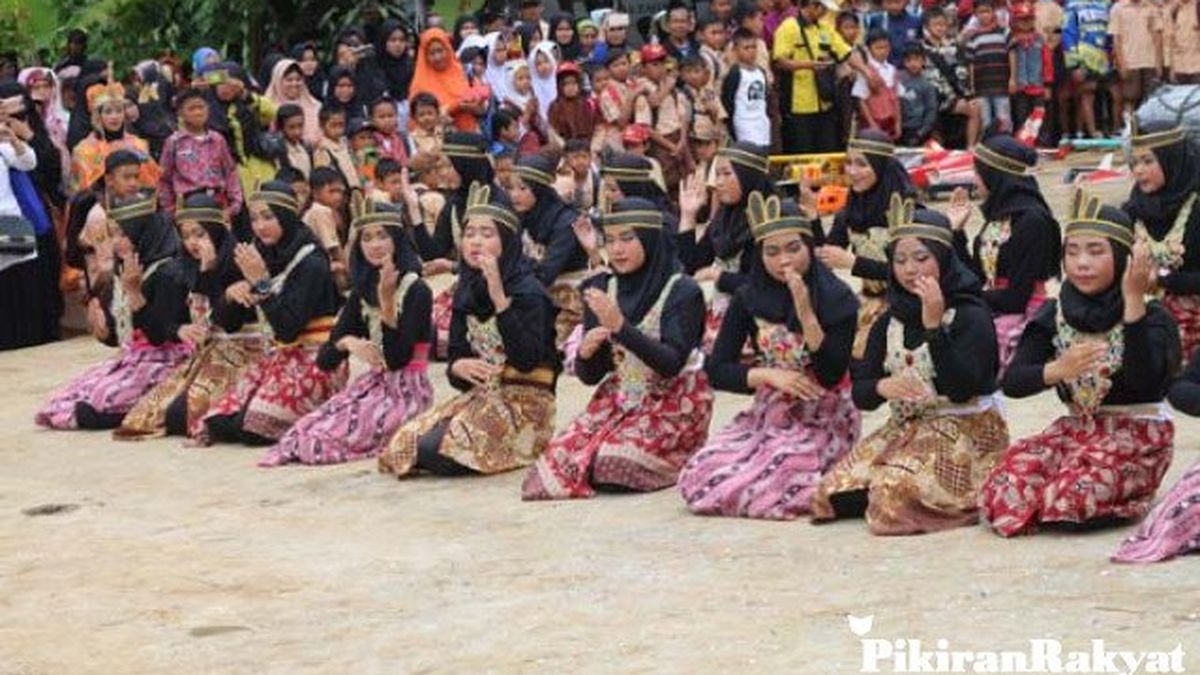PIKIRAN RAKYAT – Indonesia, the world’s largest island nation, boasts a vibrant cultural heritage reflected in its diverse and captivating traditional dances. Each dance form passed down through generations, tells a story, embodies a belief system, or celebrates a community’s spirit. Here, we explore five of Indonesia’s most prominent dances, offering a glimpse into the country’s rich artistic legacy.
Kecak Dance (Bali)
Originating from Bali, the Kecak dance is a powerful and visually striking performance. Unlike most dances, Kecak features a large group of male dancers who sit in a circle, typically numbering in the dozens.
Clad in black and white checkered cloth, they chant the rhythmic “cak cak cak” while raising their arms in a coordinated manner.
The central stage is dominated by a dramatic enactment of the Ramayana, a Hindu epic. The Kecak dance is believed to have roots in ancient trance rituals, and its unique chanting creates a mesmerizing atmosphere.
Saman Dance (Aceh)
Hailing from the Gayo Highlands of Aceh province, the Saman dance is known for its energetic and synchronized movements. Performed exclusively by men, the dance typically involves an odd number of dancers dressed in vibrant attire.
The choreography is fast-paced and complex, featuring intricate hand and footwork and body movements that demand perfect coordination.
The Saman dance is often accompanied by rhythmic chanting and the beating of a drum called the “Rebana.” Traditionally performed at social gatherings and celebrations, it has gained international recognition for its dynamic display of unity and discipline.
Serimpi Dance (Yogyakarta)
Emanating from the Javanese court culture of Yogyakarta, the Serimpi dance embodies grace, elegance, and refinement. This highly stylized dance form is performed exclusively by female dancers, traditionally four in number.
Adorned in elaborate costumes and intricate jewelry, the dancers move with a controlled poise, their gestures conveying delicate emotions and narratives.
The Serimpi dance is accompanied by the melodious sounds of a gamelan orchestra, an ensemble of metallophones, drums, and gongs. Originally performed within the royal courts for entertainment and ceremonies, the Serimpi dance continues to be a significant part of Javanese cultural heritage.
Tor-Tor Dance (North Sumatra)
The Tor-Tor dance is an integral part of the Batak culture in North Sumatra. This dance has numerous variations, each associated with specific rituals, ceremonies, and social events. One prominent form, the “Tor-Tor Tujuh Puak” (Dance of the Seven Clans), is performed during funerals and welcomes the deceased into the afterlife.
Adorned with vibrant headwear and beaded fabrics, dancers move in mighty and energetic steps. The rhythmic accompaniment of drums and gongs adds to the dance’s dramatic impact.
The Tor-Tor dance is an artistic expression, a way to connect with ancestral spirits, and a way to celebrate community life.
Caci Dance (Flores)
From the eastern Indonesian island of Flores comes the Caci dance, a performance known for its mock combat and display of masculinity. Performed by men, the Caci dance depicts a traditional warrior duel using rattan whips and shields.
The dancers wear distinctive headdresses made of palm leaves and colorful woven fabrics.
The rhythmic chanting and the synchronized movements of the whips create a thrilling spectacle. Beyond entertainment, the Caci dance serves as a form of conflict resolution, symbolically channeling aggression and fostering a sense of community.
These five dances represent just a fraction of Indonesia’s rich tapestry of traditional dance forms. Each dance offers a unique window into the country’s diverse cultures, beliefs, and artistic traditions. Whether witnessing the captivating Kecak chant, the mesmerizing synchronicity of the Saman dance, or the elegant movements of the Serimpi, experiencing Indonesian traditional dance is a journey into the heart of the nation’s soul. (Politeknik Negeri Bandung/Ahyaithannisa Taufik)***
